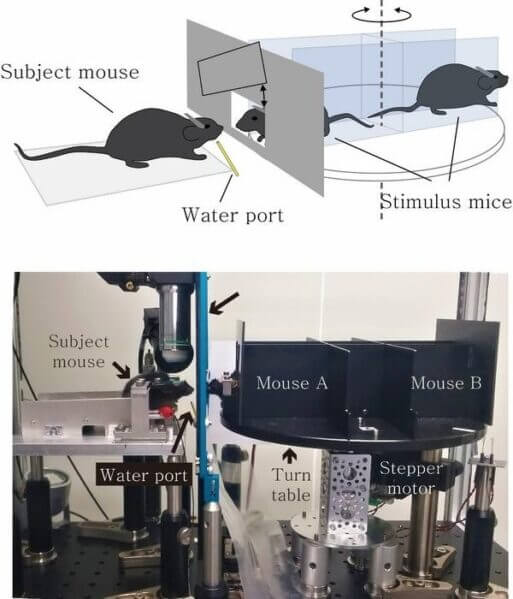Researchers from the Center for Cognition and Sociality (CCS) within the Institute for Basic Science (IBS) have made a significant breakthrough in understanding how our brains recognize and remember others. The team has identified specific neurons located in the CA1 region of the hippocampus that are responsible for processing information related to different individuals.
Establishing social relationships relies on our ability to recognize and recall the identities of those we interact with. However, little is known about the underlying neural mechanisms involved in these processes. Previous studies focused on mouse brains and explored the role of the hippocampus, a brain structure associated with memory formation.
Until now, research on neural mechanisms of individual recognition in mice primarily focused on the CA2 region of the hippocampus. However, these studies used behavioral experiments that only involved distinguishing between unfamiliar and familiar mice, making it challenging to interpret the results in terms of genuine recognition of individual characteristics.
To address this limitation, the IBS-CCS research team developed a new behavioral paradigm using mice to investigate their ability to recognize others. They trained the mice to associate specific individuals with rewards and observed their behavior when encountering these reward-associated individuals versus non-associated individuals.
The researchers immobilized two mice on a spinning disk and presented them randomly to a subject mouse, which relied on scent to recognize its neighbor. The subject mouse received a water reward when it licked in response to the reward-associated mouse, but not to the other. This allowed the researchers to assess the subject mouse’s ability to discriminate between different individuals while analyzing the activity of brain cells during the experiment.
The findings clearly demonstrated the essential role of the dorsal CA1 region of the hippocampus in individual recognition. When this region was suppressed using a neuroinhibitor, the subject mouse was unable to distinguish its neighbor. Through two-photon imaging, which enables real-time observation of neural cell activity, the researchers identified specific neuronal cells in the hippocampal CA1 region responsible for recognizing individual mice.
This discovery complements previous research that emphasized the importance of the dorsal CA2 region of the hippocampus in social memory, suggesting that the dorsal CA1 region also plays a significant role. The study also challenged the notion that social memories in rodents are short-lived, showing that mice can indeed form long-term memories about individuals.
Dr. LEE Doyun, the lead researcher, highlighted the implications of the findings, stating, “We have revealed for the first time how value information about others obtained through positive or negative interactions with them is represented and stored in our brains. Furthermore, this provides significant insights into understanding the role of our brains in building and developing human relationships through various social interactions.”
The researchers also discovered the presence of specific CA1 neurons in the subject mouse’s hippocampus that respond to positive information associated with different individual mice. Forming social relationships involves assigning positive or negative value to social encounters and updating those values accordingly. These CA1 neurons were found to be responsive when encountering reward-associated individuals, underscoring their role in forming associative social memories.
This groundbreaking discovery not only enhances our understanding of how the brain processes information about others but also holds potential implications for the treatment of brain disorders that impact social relationships. Conditions like autism, which involve abnormalities in memory processing and social information, could potentially benefit from insights gained from this research.
Dr. Lee emphasized the potential applications, stating, “Our results could be utilized to understand and propose treatment methods for mental disorders such as autism, which exhibit abnormalities in brain functions involved in processing memories and related information about others.”
If our reporting has informed or inspired you, please consider making a donation. Every contribution, no matter the size, empowers us to continue delivering accurate, engaging, and trustworthy science and medical news. Independent journalism requires time, effort, and resources—your support ensures we can keep uncovering the stories that matter most to you.
Join us in making knowledge accessible and impactful. Thank you for standing with us!

